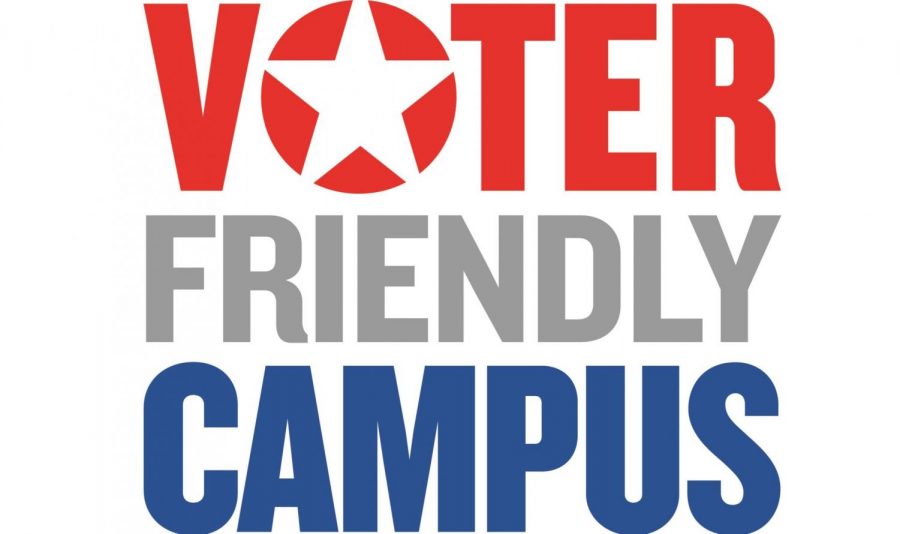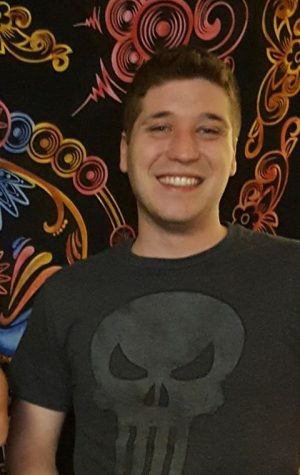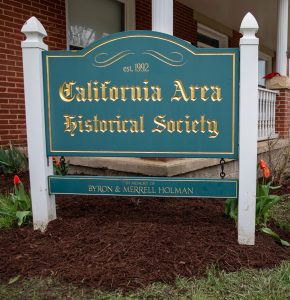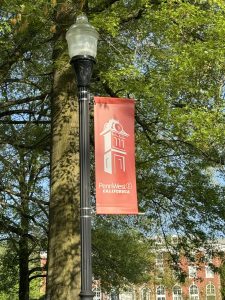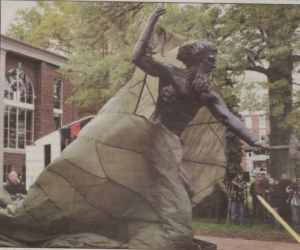Bring It To the Table
Cal U students engage in a discussion on civil discourse
November 2, 2018
“These parties are made up of shades of red and shades of blue,” said Julie Winokur in her documentary “Bring It to the Table.” On Oct. 11, Cal U Students gathered in Eberly 110 for a focused look at civil discourse.
Attendants watched a brief documentary about an organization’s effort to create a constructive dialogue between individuals with different political opinions, then engaged in a conversation about civil discourse, covering the perpetuated stereotypes of liberals and conservatives and the future of political discussion between opposing parties.
The documentary “Bring It to the Table,” consisted of Julie Winokur engaging in dialogue with various people from different political backgrounds. Those who volunteered for an interview sat down at a table that was set up on the spot in different locations, such as Central Park, a coffee shop, a church, a county courthouse, the Republican National Convention and the Democratic National Convention, and more.
A red cup with a yellow flower was placed in the center of the table and individuals slid the cup from one side of the table to the other, indicating where their beliefs place them on the political spectrum.
Once the credits rolled, students engaged in an open discussion through a Q&A format. Students praised the film for displaying both sides of the political argument and admitted to wanting civil discussion with individuals of opposing political views. Students covered how the media perpetuates stereotypes for people in a certain political category.
Some of the phrases that students used as stereotype examples for Republicans include rich, racist, power hungry, and predominantly male, while Democrats are perceived as push-overs, people focused, all about social programs, and soft.
The conclusion of the discussion delved into the future of civil discourse, as methods and things to consider while talking to another person about politics were given. Not dehumanizing the opposition was crucial, as well as the need to go beyond simply agreeing-to-disagree.
Some of the questions asked encompassed broad subjects that are the center of some political issues. They were proposed as subjects that were followed by a question, such as “Welfare: A hand-out or a help out,” “Health Care: Who’s responsibility is it,” and “Immigration: Is there a legal option?”
After those questions, people in the interview gave their answers, and another interview that represented the opposite end of the political spectrum was played, creating a simulated conversation.
The video helped liberals and conservatives see some of the reasons why people follow the political path they take. Winokur’s work highlighted the major concerns that people have in their specific political position on the spectrum.
With conservatives, the main issue they want to address is government spending. Most conservatives identify their views based on fiscal issues and family values. Liberals identified their biggest concern as proper social programs and immigration
The documentary “Bring It to the Table,” is just one part of a political movement aimed at fostering community and bridging the political divide by talking about issues to elevate the conversation to a national level. It started when Winokur’s son called her the most intolerant person he knew on political issues.
The film and discussion was part of the American Democracy Project. The discussion was led and organized by Rebeccah Ambrosy-Smith, a Campus Vote Project fellow, and Maggie Smith. Dr. Melanie Blumberg oversaw this discussion.

